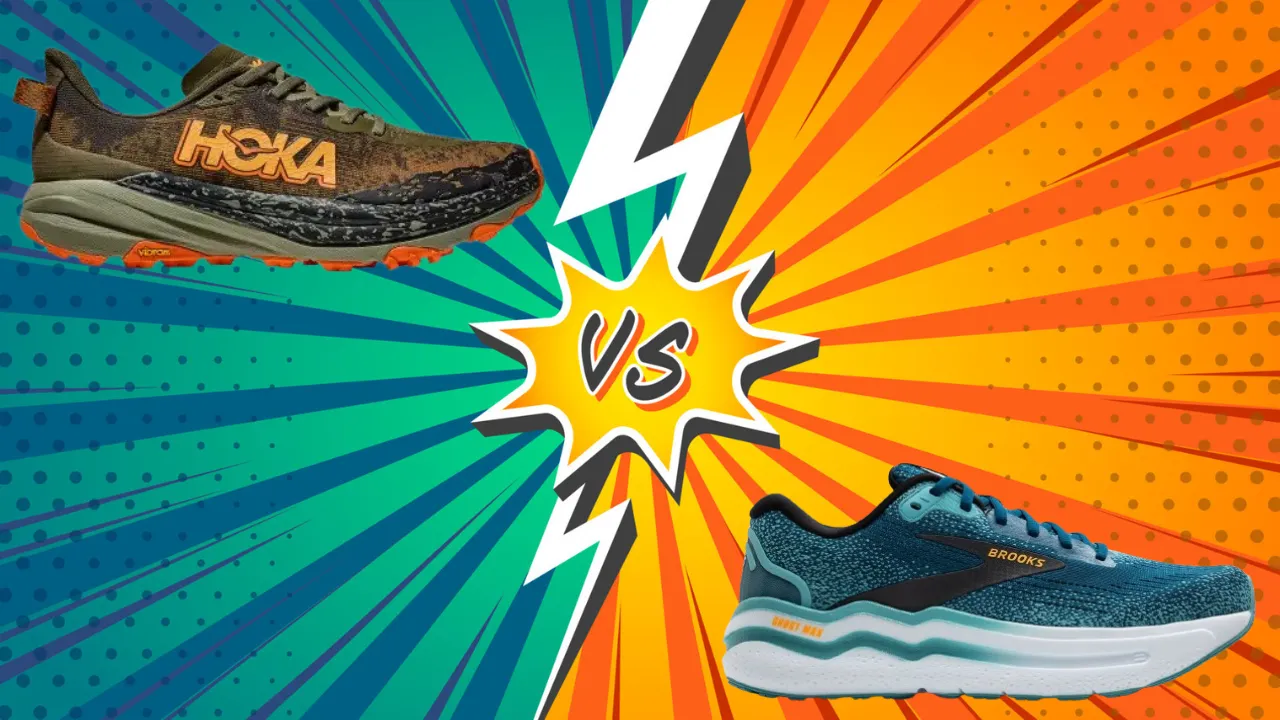Looking for your next perfect running companion but torn between trail and road? We’re diving deep into two popular shoes that serve different purposes – the trail-crushing Hoka Speedgoat 6 and the road-loving Brooks Ghost Max 2.
Both pack impressive features but target different terrains and running styles. Let’s break down these powerhouses to help you make the right choice for your feet.
key takeaways:
- The Hoka Speedgoat 6 is the clear winner for trail running and technical terrain with its Vibram® Megagrip outsole and protective features, while the Brooks Ghost Max 2 dominates road running with its plush cushioning and smooth transitions.
- For all-day comfort and walking on paved surfaces, the Ghost Max 2’s maximum cushioning and rocker design make it the better choice, but for hiking and nature walks, the Speedgoat 6’s technical features provide superior performance.
- Despite being slightly more expensive at $155, the Speedgoat 6 offers excellent value for trail runners, while the Ghost Max 2 ($150) provides similar value for road runners – making price a neutral factor in the decision.
- Weight difference is notable – the Speedgoat 6 is lighter at 9.80 oz compared to Ghost Max 2’s 10.8 oz, but each shoe’s weight is optimized for its intended use case.
- Both shoes effectively support plantar fasciitis but in different ways – Ghost Max 2 through maximum cushioning and rocker design, Speedgoat 6 through balanced cushioning and supportive chassis – making terrain preference the deciding factor.
Quick Comparison Table:
| Feature | Hoka Speedgoat 6 | Brooks Ghost Max 2 |
|---|---|---|
| Stability | Neutral with internal support chassis | Neutral with broad base design |
| Flexibility | Moderate flexibility with rigid outsole | High flexibility with rocker design |
| Sizing | True to size with wider toebox | True to size with standard fit |
| Weight | 9.80 oz | 10.8 oz |
| Cushion | Balanced responsive cushioning | Maximum plush cushioning |
| Outsole | Vibram® Megagrip with 5mm lugs | Road-focused rubber compound |
| Midsole | Lightweight responsive foam | Soft DNA LOFT cushioning |
| Upper | Woven textile with protective features | Engineered mesh |
| Retail Price | $155 | $150 |
Features Comparison:
1. Material:
The Speedgoat 6 showcases premium materials with its Vibram® Megagrip outsole, providing exceptional grip on technical terrain. The woven textile upper offers durability with breathability.
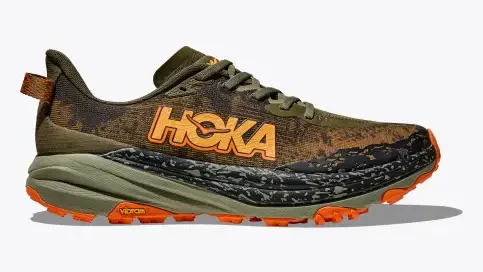
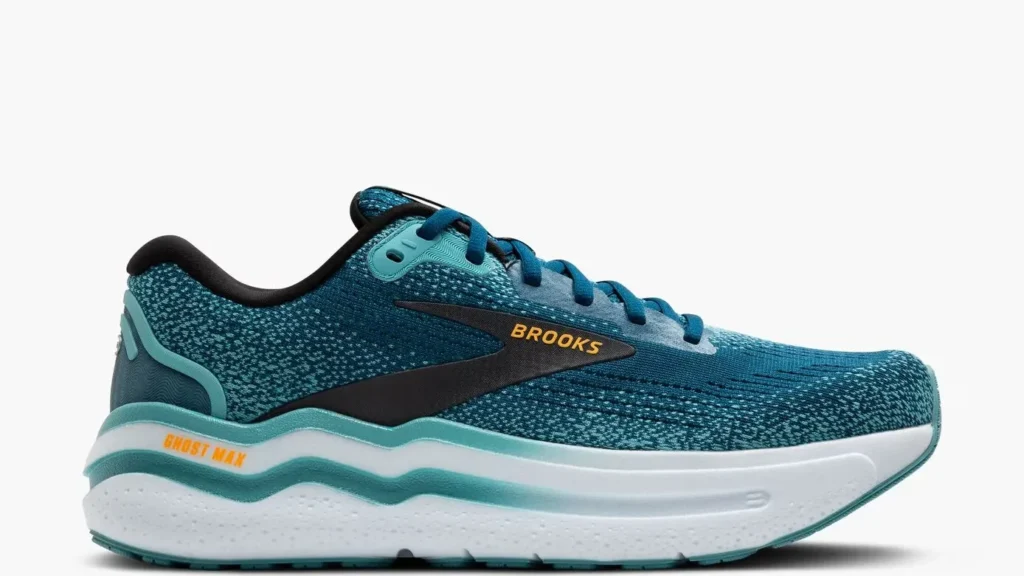
Meanwhile, the Ghost Max 2 utilizes a specialized road-focused rubber compound for its outsole and features an engineered mesh upper that prioritizes comfort.
Both shoes use high-quality materials, but they’re engineered for their specific environments – trail versus road.
2. Durability:
Trail running demands tougher construction, and the Speedgoat 6 delivers with its reinforced toe bumper and robust outsole design. The protective overlays and durable thread pattern ensure longevity on rough terrain.
The Ghost Max 2 focuses on road durability with its strategically placed rubber in high-wear areas. However, it may show wear faster than the Speedgoat when used on rough surfaces. Both shoes maintain structural integrity well within their intended uses.
3. Fit:
The Speedgoat 6 features a secure fit with its internal support chassis and dual-sided gusseted tongue, preventing unwanted movement on technical terrain. The toebox offers adequate room for toe splay.
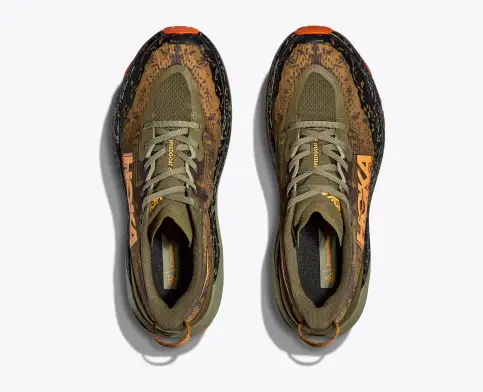
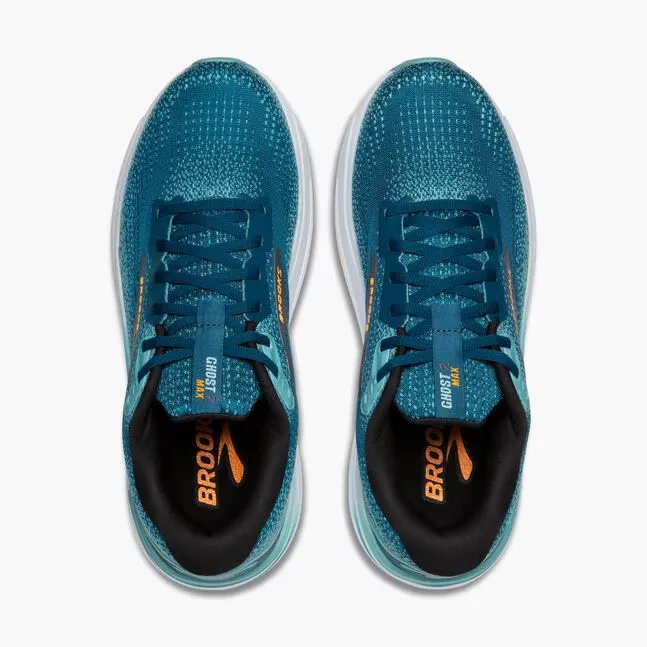
The Ghost Max 2 provides a more relaxed fit with its broader platform and accommodating upper. Its traditional lacing system allows for customized adjustment. Both shoes run true to size but serve different fit preferences.
4. Cushioning:
Hoka’s proprietary foam in the Speedgoat 6 delivers responsive cushioning that maintains ground feel – crucial for trail running. The stack height balances protection with stability.
The Ghost Max 2 takes a different approach with its maximum cushioning design, featuring soft DNA LOFT technology that excels in impact absorption. It provides a plush, cloud-like experience ideal for road running and recovery days.
5. Stability:
The Speedgoat 6’s stability comes from its internal support chassis and balanced cushioning platform, offering confident footing on uneven terrain. The 5mm drop promotes natural positioning.
The Ghost Max 2 achieves stability through its broad base design and rocker geometry. While both are neutral shoes, they provide stability through different mechanisms suited to their intended uses.
6. Value for Money:
At $155, the Speedgoat 6 justifies its price through versatility and durability in trail conditions. Its technical features and premium materials make it a solid investment for trail enthusiasts.
The Ghost Max 2, priced at $150, offers excellent value for road runners seeking maximum cushioning and comfort. Both shoes deliver good returns on investment when used appropriately for their designed purposes.
Performance Testing:
Walking Performance:
The Ghost Max 2 excels in walking comfort with its plush cushioning and smooth rocker transition. The broad base and generous cushioning make it ideal for long walks on pavement or indoor surfaces.
The Speedgoat 6, while capable, feels overbuilt for casual walking unless you’re on trails. Its aggressive lugs and technical features are more than needed for regular walking, though it performs exceptionally well on nature walks and hiking paths.
Running Performance:
On trails, the Speedgoat 6 shines with its perfect balance of protection and responsiveness. The Vibram® outsole provides confident grip, while the cushioning protects from rock impacts without sacrificing ground feel.
The Ghost Max 2 dominates road running with its smooth transitions and plush cushioning. Its rocker design promotes efficient movement, making it perfect for long road miles. Each excels in its intended environment but struggles when used outside it.
Standing All Day:
For all-day standing, the Ghost Max 2 takes the lead with its maximum cushioning design and stable platform. The plush midsole prevents fatigue, while the rocker shape promotes natural movement when needed.
The Speedgoat 6, despite its good cushioning, isn’t optimized for static standing. Its trail-focused features, like aggressive lugs, can feel awkward on hard, flat surfaces during prolonged standing.
Plantar Fasciitis:
Both shoes offer good support for plantar fasciitis but in different ways. The Ghost Max 2’s maximum cushioning and rocker design help reduce strain on the plantar fascia, making it excellent for road runners with this condition.
The Speedgoat 6’s balanced cushioning and supportive chassis also provide good relief, particularly for trail runners. The choice depends more on your preferred running surface than the condition itself.
Conclusion: Which Is Better For You?
The choice between these shoes boils down to your primary use case. Choose the Speedgoat 6 if you’re hitting the trails regularly and need a shoe that can handle technical terrain while providing protection and stability.
Opt for the Ghost Max 2 if you’re primarily a road runner seeking maximum cushioning and comfort for long miles on pavement. Both are excellent shoes within their intended purposes, but neither excels when used outside their designed environment.

